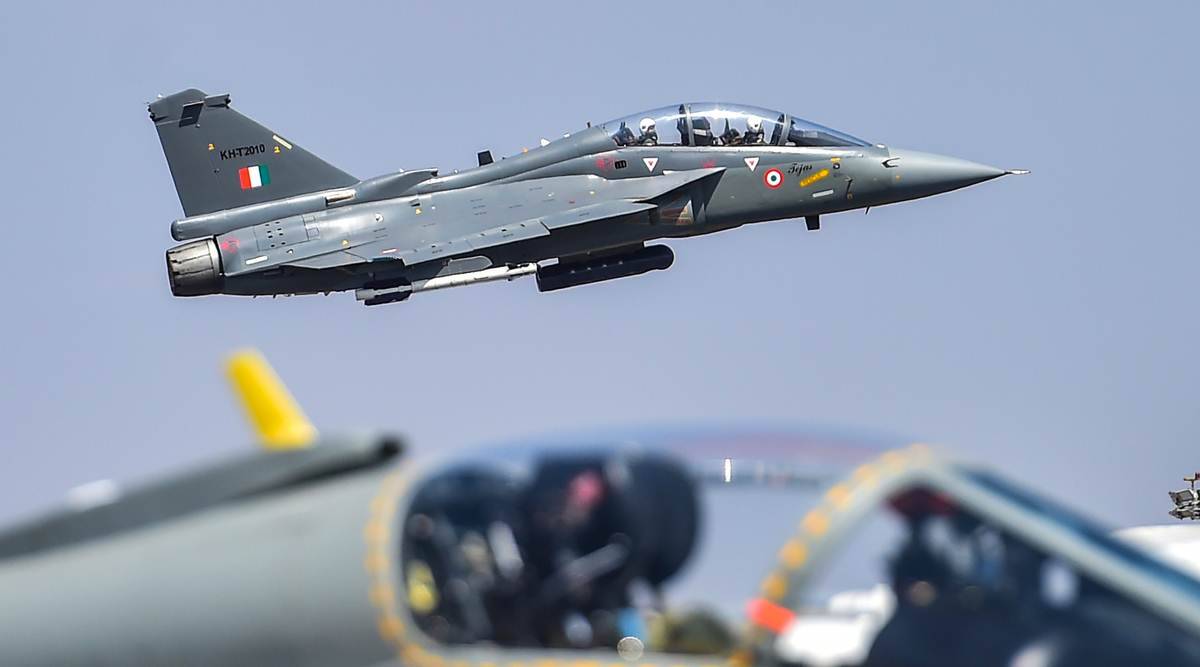According to officials familiar with the matter, the light combat aircraft (LCA) Mk-2, India’s most advanced warplane, will have enhanced survivability, better situational awareness for pilots, high payload capacity, improved range, network centric capabilities, integrated avionics, and the ability to quickly switch from one role to another.
The Cabinet Committee on Security, led by Prime Minister Narendra Modi, approved the long-awaited proposal for the construction of the LCA Mk-2, which is likely to play a key role in future air combat, on August 31.
The new aircraft, which is being developed at a cost of around 10,000 crore, will have a payload capacity of 6.5 tonne and will be capable of carrying a variety of weapons, including beyond visual range air-to-air missiles, air-to-ground missiles, heavy precision guided weapons, and conventional bombs, according to one of the officials, who did not want to be identified.
The 17.5-tonne fighter will have a top speed of 1.8 Mach and a service ceiling of 50,000 feet, thanks to the higher performance GE F414-INS6 engine (previous LCA types used the F404).
According to a second official acquainted with the project, the LCA Mk-2 will also have a stronger radar, increased fuel capacity, a unified electronic warfare suite, indigenous flight control actuators, an improved digital flight control computer, and better cockpit displays.
The new fighter jet will meet the needs of the Indian Air Force (IAF), which has already received several of the 40 older LCA types and ordered 83 enhanced Mk-1A variants. The Mk-2 fighter will be the most advanced LCA type conceived and built in-house by the Aeronautical Development Agency (ADA)
The LCA Mk-2 fighter could fly for the first time in two years, paving the way for production and operational availability by 2028-29 to replace the Mirage 2000s and Jaguars.
The LCA Mk-2 will be a step forward from the Mk-1A fighter. Last year, the defence government granted Hindustan Aeronautics Ltd (HAL) a 48,000 crore deal for 83 LCA Mk-1A fighters for the Indian Air Force. The first Mk-1A aircraft is planned to be delivered to the air force in March 2024, with the remainder joining the fleet by 2029.
“The IAF is facing a fighter squadrons shortage, and the LCA Mk-2 will play a critical role in filling capacity gaps.” At the same time, it is critical to ensure that the LCA Mk-1A manufacturing rate is increased,” noted Air Marshal Anil Chopra (retd), director general of the Centre of Air Power Studies, when the LCA Mk-2 project was approved by the CCS.
According to officials, the aircraft will be outfitted with advanced avionics, including a smart large area display, a sleek head up display, infrared search and track capability to detect threats at long ranges, missile approach warning systems, and countermeasure dispensing systems for self-protection.
As previously reported, the IAF may order more than 210 LCA Mk-2 fighters in the long run.
Of the 123 LCA variants currently ordered, 20 are in the initial operational clearance (IOC) configuration and the more advanced final operational clearance (FOC). The remaining 83 LCA Mk-1A fighters will be improved over the FOC aircraft.
Digital radar warning receivers, external self-protection jammer pods, enhanced beyond-visual-range missiles, and greatly increased maintainability will be standard on the Mk-1A.
The LCA Mk-2 is expected to bridge the gap between the Mk-1A and the indigenous fifth-generation fighter programme, the advanced medium combat aircraft (AMCA), which is currently under development. AMCA might be outfitted with directed energy weapons, advanced anti-missile defence systems, and unmanned systems.
According to officials, the LCA Mk-2 project will provide a big boost to the Aatmanirbhar Bharat (self-reliance India) campaign, which is one of the government’s top goals.
Last month, the government imposed a new import ban on hundreds of military subsystems and components, sharpening India’s quest for indigenisation, setting goals for the local defence manufacturing industry, and shining a light on the journey thus far and the long road ahead for achieving meaningful self-reliance.
The main steps taken to boost self-reliance include the publication of a series of positive indigenisation lists (six have been published so far to prohibit the import of major weapons, platforms, subsystems, and components), the creation of a separate budget for purchasing locally made military hardware, and the allocation of research and development funds to private industry and start-ups.
